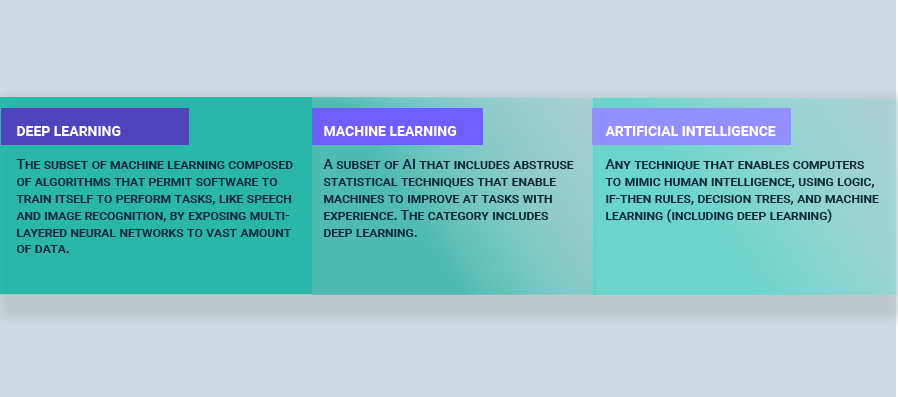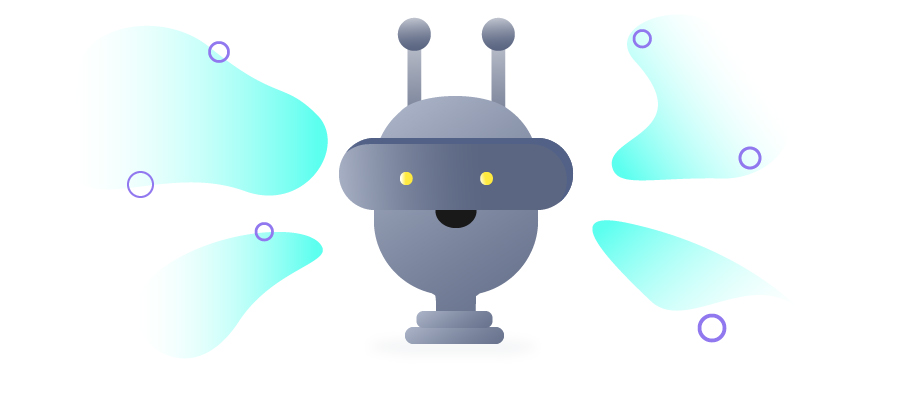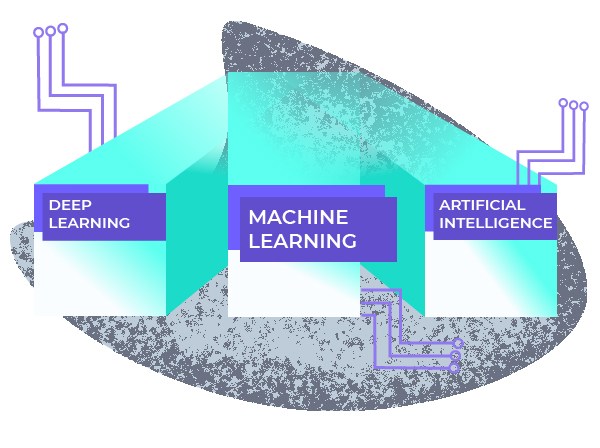Intro
Machine learning, artificial intelligence, and deep learning share the same definition in a lot of senses, yet still using these terms interchangeably is wrong in the first place. In this post, we’re breaking down the concept of AI and its subsets, comparison with traditional programming included.

ML, AI, and DL: Programming Glossary
Let’s start with defining these three concepts.
1. ML

Machine learning is a subset of artificial intelligence that consists of algorithms machines are using to perform tasks without being specifically programmed for. Machine learning is a necessity for software that’s aimed at solving tasks which cannot be defined by strict instructions, like predictions based on data analysis, email filtering, gathering of analytics without human operators, etc.
From the scientific point of view, ML is the study of statistical models and algorithms needed for a machine’s unsupervised performance. These models fall back on a training data — information computer engineers load the computer system with when preparing it for work. That sample data serves as a reference point for ML-enabled software, which later gets combined with the experiences the program got from the past. All combined, this allows a machine to make predictions and even decisions without programmer supervision.
To sum up, machine learning is a set of algorithms that can be learned by a machine with a single aim — to get machines to learn and act like humans do, as well as give them the ability to get smarter overtime on their own. In its turn, ML is closely related to such fields of study as data mining, mathematical optimization, and computational statistics. Data mining powers unsupervised learning by giving machines the advantage of exploratory data analysis for smart analytics.
2. AI

Artificial intelligence is an area science that in simple words aims at building a robot that would mimic human behavior at its fullest, including thinking, deciding, making mistakes, and learning its lesson from these mistakes for better performance in the future. AI as a science approaches the development of such technologies as signal and natural language processing and computer vision among others. Among all the terms we’re discussing in this post, artificial intelligence is the broadest one.
The problem with defining AI is the hype this term got in a past few years: these days artificial intelligence means everything but nothing at the same time and has basically turned into a sales-generating cliche for marketers. Some call it a theory, while others refer to successful AI-powered launches like Siri and Google Assistant that actively impose AI being a part of tech stack in their marketing campaigns.
Artificial intelligence can be classified as narrow or general, called in some sources as weak and strong correspondingly. Narrow artificial intelligence is trained to deal with a few predefined tasks within a limited number of scenarios, for example, to assist a user with using a smartphone. At this time you’ve probably already guessed that such products as Amazon Alexa, Google Assistant, and Apple Siri are perfect examples of narrow AI, right? As for the general AI, it is a powerful system with generalized cognitive abilities capable of everything that human can do as well. it is not limited by case scenarios or certain environment and can solve unseen before issues without a human involved.
3. DL

Deep learning is a scientific subfield of machine learning inspired by structure and functioning of human brain. As we all know, the fundamental unit of human brain is nothing else than a neuron, also referred to as a nerve cell. In our bodies, neurons are responsible for receiving input from the world around us and transforming that input into a command for our consciousness. That’s the exact thing deep learning does, with a single amendment — instead of a person’s mind, the artificial neural network runs in a machine.
At its simplest, an artificial neuron is a thing that holds the number and that number is the only meaning of every neuron in the network. Network in its turn has a layered structure: on the first layer the raw data input takes place, and on the last one the already processed data finds its output. In between the input and output layers, so-called hidden layers are situated. These layers are just as important and actively utilized in the neural network performance, however, the neural connections and exact ways of data analysis on these layers still cannot be retrieved and broken down into formulas. The fewer layers a network contains, the faster it processes the information, however, the more layers are built — the more accurate and error-free is the network’s performance. These days, no machine learning technique works without deep learning function.
After having explored each of the terms one after another, the puzzle of machine learning vs artificial intelligence vs deep learning isn’t as scary and enigmatic anymore. Fundamentally, artificial intelligence is the most all-encompassing term that can be used literally anytime we talk about a computer mimicking human behavior, even when it’s the simplest action. Machine learning is slightly more narrow in terms of terminology since it cannot be used separately from a program’s ability to learn through experience. And finally, deep learning is the most specific term out of all three and refers to multilayered neural networks that act as a human brain in terms of data processing.
Machine Learning vs Traditional Programming
The picture wouldn’t be full without us mentioning the place of traditional programming in all that buzz surrounding artificial intelligence and its subsets. So, traditional programming refers to a manually developed software solution that goes through the following steps when performing:

User loads a program with data on the input level so that it would process it following a predefined set of actions that were manually written by a software developer once upon a time. The output would not be possible if there were no people creating a program in the first place.
As for the machine learning, input and output are combined in a single system that altogether creates a program which performs without a human being directly involved:

That’s the key difference between the two: manual vs automated processes. Although the neural networks do not create themselves and we still need software engineers to create one and train it, once done — machine learning takes data processing to the whole new level resulting in the unseen potential for technology and businesses.
Summary
The difference between AI and ML remains a controversial topic, and inventing of new hyped terms such as deep learning doesn’t make it easier. However, you don’t have to be a Computer Science pro to understand the world of artificial intelligence. Start with looking around and you’ll discover we interact with machines that actually learn all the time: from virtual assistants on our phones to bots helping us paying bills and mobile apps that seem to know what we’re thinking about at this very moment. If this post has caught your interest in machine learning tech stack, we’re here to consult you, and who knows — maybe it’s your ML mobile app idea that market lacks right now.



